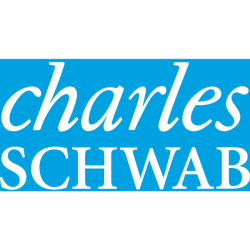Calculate the Compound Growth and Income of Dividend Growth Stocks - the Dividend Snowball Effect.
By reinvesting your dividends (DRIP), you can increase the number of shares you own. This will result in more shares earning dividends, continuously growing your portfolio.
Results by year: Dividends, Yield, Number of Shares, and Portfolio Value
| Year | Start Balance | Start Shares | Share Price | Dividend / Share | Dividend Yield | Yield on Cost | Annual Dividend | Total Dividends | End Shares | End Balance |
|---|
Detailed HD report - earnings, cash flow, dividends, etc.
The table above displays your estimated investment progress year by year. Please note that returns are not guaranteed. These are projections based on the information you provided to the calculator.
In the graph on dividends and portfolio growth above, you can see the amounts for Total Dividends, Investment, No DRIP, and End Balance, for each year.
The "NO DRIP" bar means the sum of your total investment and additional investments that are made at your selected intervals, as well as all dividends collected, but not reinvested.
Most Popular Stocks & ETFs Today
 YMAX
YMAX
 MSFT
MSFT
 AAPL
AAPL
 YMAG
YMAG
 O
O
 VICI
VICI
 MO
MO
 FXAIX
FXAIX
 VFIFX
VFIFX
 TSLA
TSLA
Historic Dividend Payments & Yield for HD
Below is the graph of ALL HD dividend payments, overlayed with Dividend Yield line. As you can see both have an upward trajectory! So while your dividend payments are going up, so does you actual yeild and "Yield on Cost".
The red line on the HD dividend graph represents the Dividend Yield on the day the dividend was paid, based on
TTM (trailing twelve months) dividend payments, and HD share price on the dividend-payment date.
As you can see HD Dividend yield has hsitorically gone UP, compared to many other popular ETFs, such as
VOO/SPY, etc - this means that HD dividend CAGR is historically higher than its share price CAGR.
And that is a GOOD THING, since your dividend grow faster than the share price. So each time you 'DRIP', you get more bang for your buck!
HD Historic Dividend Payments & Yield list
Below is a table of last 10 HD dividend payments, ex-dates, share price on the day of the payment as well as TTM & forward yield
| Dividend Date | Dividend Amount | TTM Yield | Forward Yield | Share Price |
|---|---|---|---|---|
| 11-27-2024 | $2.25 | 2.11% | 2.11% | $427.19 |
| 08-29-2024 | $2.25 | 2.41% | 2.45% | $367.06 |
| 05-30-2024 | $2.25 | 2.64% | 2.73% | $329.18 |
| 05-29-2024 | $2.25 | 2.66% | 2.76% | $325.91 |
| 03-06-2024 | $2.25 | 2.26% | 2.38% | $377.44 |
| 11-29-2023 | $2.09 | 2.69% | 2.69% | $311.02 |
| 08-30-2023 | $2.09 | 2.47% | 2.53% | $330.63 |
| 05-31-2023 | $2.09 | 2.82% | 2.95% | $283.45 |
| 03-08-2023 | $2.09 | 2.67% | 2.87% | $291.49 |
| 11-30-2022 | $1.9 | 2.35% | 2.35% | $323.99 |
What is DRIP (Dividend Reinvestment)?
DRIP is a process for reinvesting your stock dividends into buying more shares of your stock.
Instead of taking cash, you reinvest the dividends, so that on the next dividend payout, you will have more shares of stock, that will pay you more dividends.
When you “DRIP” for a long time, you create a what is known as “Dividend Snowball” effect.
For example: If you invest $10,000 into a company paying 8% dividend (assuming dividend does not decrease in the future),
and assuming an annual increase in dividends of 4%, and share price will increase an average of 5% per year, and you DRIP or reinvest ALL your dividends, in 10 years, your initial $10K will turn into $32,469.
This equals a compound growth (CAGR) of 224.69% or 22.469% per year!
If you continue holding this same position for 20 years, your total growth will be 937.1% or 46.86% per year, and your $10,000 investment will turn into $103,710
What are Dividends – Beginner Guide:
Video above explains why dividends are better than investing in Money Markets / High Yield Savings Accounts (HYSA) and Bonds/Treasuries.
What are the risks with DRIP?
As with any investment, risks are limitless, and you could end up losing your entire investment. This however is not very likely, as most companies do not go bankrupt.
There are other risks, such as company cutting its dividends. This is much more common.
However, there are companies known as Dividend Kings and Dividend Aristocrats, which are known to respectively increase their dividends for at least 50 and 25 years in a row!
When investing in Dividend Kings and Dividend Aristocrats, your risks are historically much lower (but still are real).
Buying HIGH Yield (Low Growth) vs. LOW Yield (High Growth) stocks:
Here we cannot tell you which one is better. But a simple calculation for SCHD stock (high dividend growth ETF based on S&P500 Dividends Index),
which has historically increased their dividends by 12.82% over past 10 years and increased in share price by 11.8% over same period, it would take at least 10 years to catch up to an 8% Dividend Yield stock (if same price appreciation and dividend increases continue).
However, by year 20, it is estimated to grow from $10,000 to $162,044, which beats our “hypothetical” 8% yield stock by $48,334 in total returns or about 55%!
Benefits of Dividend Reinvestment Plans (DRIPs)
Dividend Reinvestment Plans (DRIPs) offer several benefits to investors who hold dividend-paying stocks or mutual funds. Here’s a brief overview of these benefits:
- Compounding: DRIPs enable compounding of returns. Instead of receiving cash dividends, the dividends are automatically reinvested to purchase more shares of the same stock or fund. Over time, this reinvestment leads to exponential growth as you earn dividends on your existing shares, as well as on the additional shares purchased through reinvestment.
- Cost Efficiency: DRIPs often allow you to reinvest dividends without incurring brokerage fees or transaction costs. This can be particularly advantageous for investors who want to make small, frequent investments without worrying about fees eating into their returns.
- Dollar-Cost Averaging: DRIPs promote a dollar-cost averaging strategy, where you invest a fixed amount of money at regular intervals (such as with each dividend payout). This approach helps mitigate the impact of market volatility because you buy more shares when prices are low and fewer when prices are high. Over time, this can potentially lead to a lower average cost per share.
- Automatic Reinvestment: DRIPs automate the process of reinvesting dividends. This eliminates the need for investors to actively monitor dividend payouts and make manual investment decisions. It ensures a disciplined approach to reinvestment and keeps your investment strategy on track.
- Long-Term Growth: By consistently reinvesting dividends, you can accelerate the growth of your investment portfolio over the long term. This is particularly beneficial for investors with a long investment horizon who are focused on building wealth for retirement or other long-term financial goals.
- Reduced Behavioral Bias: DRIPs can help mitigate the effects of emotional decision-making. Investors might be tempted to spend cash dividends when received, potentially impacting their investment strategy. With DRIPs, dividends are automatically reinvested, reducing the temptation to deviate from the original plan.
- Simplified Management: DRIPs simplify portfolio management. As dividends are reinvested automatically, you don’t need to decide how to allocate the cash or which investments to purchase. This is especially useful for investors who prefer a hands-off approach or have multiple holdings to manage.
- Tax Efficiency: While dividends are still subject to taxation, DRIPs can help defer taxes until the investment is eventually sold. This can be advantageous for investors in higher tax brackets or those aiming to minimize their annual tax liabilities.
It’s important to note that while DRIPs offer several benefits, they might not be suitable for all investors or all investment strategies. It’s recommended to evaluate your financial goals, risk tolerance, and investment preferences before deciding to participate in a DRIP.



 SCHD
SCHD
 JEPQ
JEPQ
 MSTY
MSTY
 CONY
CONY
 VOO
VOO
 SCHG
SCHG
 NVDY
NVDY
 SPYI
SPYI
 DGRO
DGRO
 TSLY
TSLY